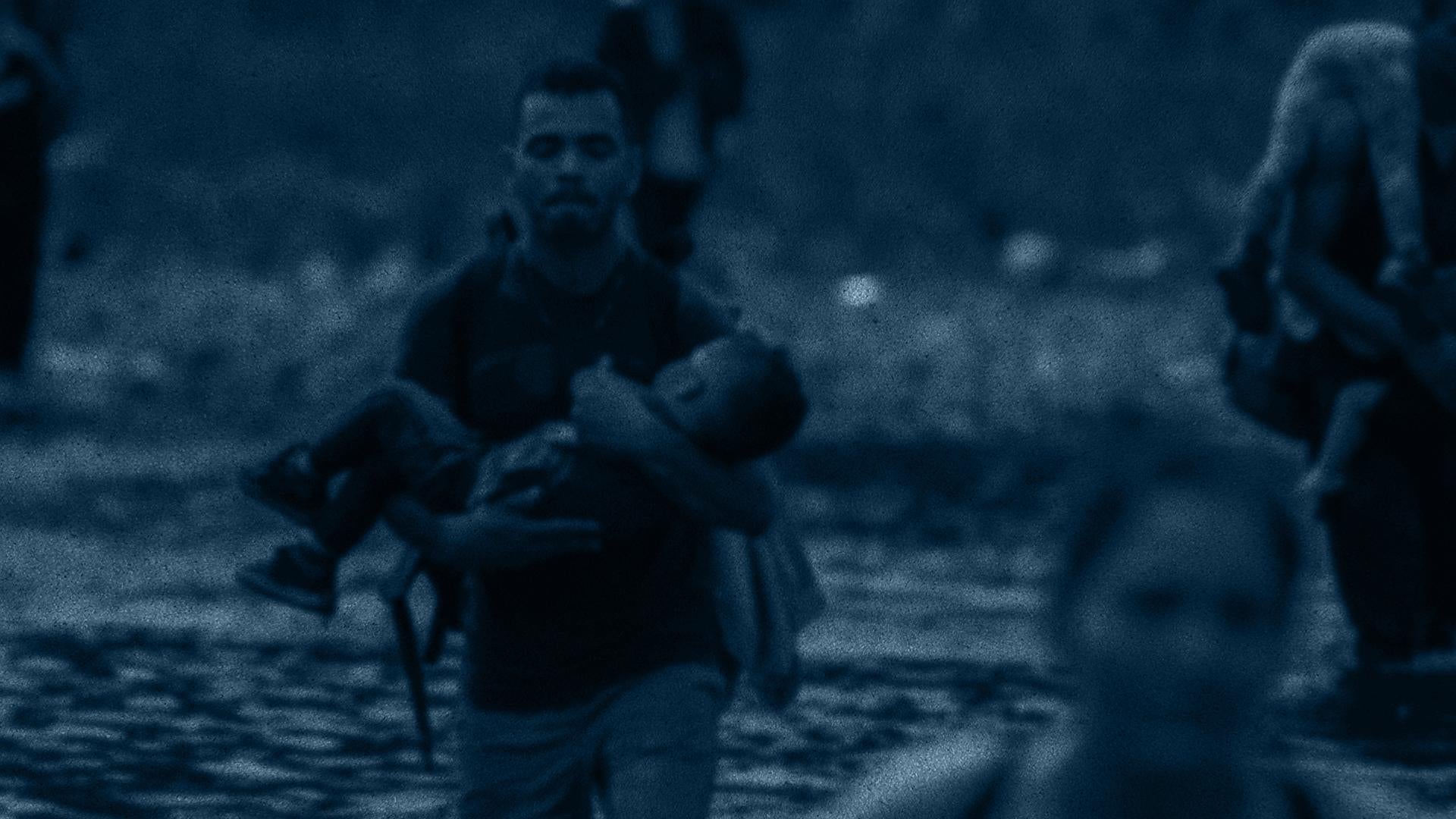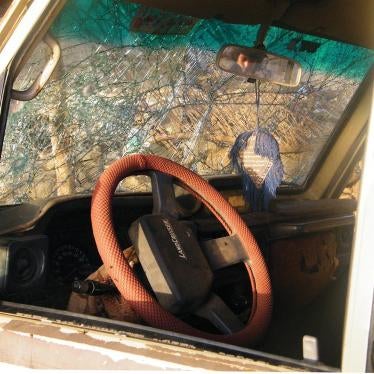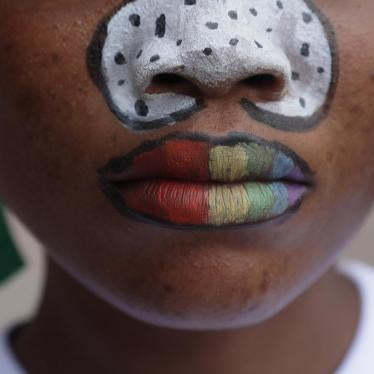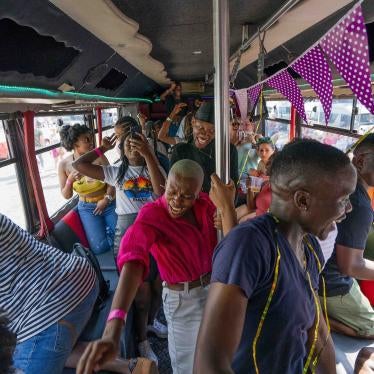The Lebanese government should launch an impartial investigation into a violent attack last week on Palestinian demonstrators by army forces and Lebanese civilians that left two Palestinians dead and at least 28 injured, Human Rights Watch said today. Military personnel responsible for unlawful use of force and civilians who attacked demonstrators should be held accountable.
“The Lebanese army killed two apparently peaceful protesters, wounded many more, and did nothing to stop Lebanese civilians from attacking demonstrators,” said Sarah Leah Whitson, Middle East director at Human Rights Watch. “The government should open an investigation to determine why the soldiers fired on the crowd and why they neglected to protect the protestors from attacks by civilians.”
On June 29, Lebanese army forces opened fire on Palestinian demonstrators who were marching from the Baddawi Palestinian refugee camp to the Nahr al-Bared camp, the scene of fierce fighting over the past six weeks between the army and the armed group Fatah al-Islam. The demonstrators, largely residents of the camp forced to evacuate due to the conflict, wanted an end to the fighting and to return to their homes.
According to the army, armed protesters tried to break through a checkpoint to continue to Nahr al-Bared camp and had not respected the army’s repeated warnings to stop. But two eyewitnesses, a Palestinian community activist and an international observer who monitored the demonstration, told Human Rights Watch that the demonstrators were peaceful and unarmed, and that no one had tried to break through the checkpoint.
It is unclear what provoked the army’s fire. The witnesses Human Rights Watch interviewed suggested that someone other than the demonstrators and the army may have opened fire from nearby buildings, and the sound of gunfire may have provoked the army to react. “Shooting occurred from civilian buildings, toward the civilian Palestinians. I didn’t see it with my eyes, but it was clear,” the Palestinian activist said. “The army shot back, thinking it was being shot at.”
Both witnesses said that after the army opened fire, local Lebanese residents attacked the Palestinian demonstrators with sticks and knives, and the Lebanese army and other Lebanese security forces failed to intervene.
The demonstration began as a peaceful protest to express solidarity with the Palestinians of Nahr al-Bared at the nearby Baddawi refugee camp, where thousands of displaced Palestinians from Nahr al-Bared have taken shelter. A crowd joined the group after Friday’s noon prayer, and a few hundred people began to march toward Nahr al-Bared, against the wishes of the organizers.
Between 200 and 300 demonstrators stopped on the road to Nahr al-Bared, about 200 meters before a Lebanese army checkpoint, the witnesses said. Between 1 and 2 p.m., the army fired warning shots, apparently in the air, in an effort to disperse the crowd.
Activists from various Palestinian political factions tried to convince the demonstrators to go home, and a group of women sat down in front of the crowd, trying to calm them down. The crowd did not leave and, after about 10 minutes, the army opened fire.
“The army fired warning shots, the women moved in front and sat on the ground in an effort to calm down the protesters – there was yelling but not more than that,” said Caoimhe Butterly, the international observer from the nongovernmental organization Lebanon-Support. “Some people tried to mediate and to tell the people to go. We could clearly see this because they had their backs turned to the army and were waving their hands in the air.”
“After a few minutes of calm, and when people were sitting on the ground, I heard the army shooting. Panic … and people were dispersed,” Butterly said.
According to the Palestinian activist, who wished not to be named, “When the shooting occurred, I was attempting to convince the demonstrators in the rear to turn back. Others were working on the front ranks. The first injured were people from the [Palestinian political] factions who were attempting to stop the demonstration and asking the demonstrators to go back.”
The Lebanese army presented a different version of events. In a statement, it said the “protesters had cut the road with burning tires and obstacles, demanding to return to Nahr al-Bared” and that “the army did its best to break up this march peacefully, but it did not receive any cooperation from the demonstrators who attempted to cross the army checkpoint without complying with the warning shots fired by the army.”
The army claimed that the demonstrators “had sticks and sharp items that threatened the safety of the security forces.”
“The only way to know what happened is for the government to launch an independent and transparent investigation,” Whitson said. “If the army performed lawfully, then it has nothing to hide.”
On Sunday, July 1, the army expressed condolences for the deaths of the two demonstrators, whom it called “martyrs” who were victims of “terrorist” activities. To date, neither it nor the government has announced any investigation or prosecution of either soldiers or the civilians who attacked the demonstrators.
Both witnesses also explained how, after the shooting, Lebanese civilians in the area attacked the Palestinian crowd with knives and sticks.
“Lebanese civilians attacked the protesters. Some people who sought shelter were stabbed. I know of four stabbing incidents,” Butterly said. “One of the activists had his camera broken, video taken, and was stabbed.”
“There were clashes and fighting with hands and clubs and sticks with the locals, Lebanese civilians,” the Palestinian activist said. “The clubs and sticks and sharp knives were with the attackers, not with the demonstrators.”
An official in the Palestinian Red Crescent identified the two dead as Muhammad Abu al-Jundi, approximately 42, and Husam Mezyan, approximately 25. News reports said a third person died, but Human Rights Watch has not confirmed that death.
An official at Safad Hospital in Baddawi told Human Rights Watch that the doctors there treated 28 injured demonstrators, including five people with bullet wounds. “Most injuries are in the lower body parts,” he said.
In policing demonstrations, security forces, including the military, should abide by the United Nations Basic Principles on the Use of Force and Firearms by Law Enforcement Officials, Human Rights Watch said. The principles call upon law enforcement officials to apply nonviolent means before resorting to the use of force only in proportion to the seriousness of the offense, and to use lethal force only when strictly unavoidable to protect life.
Palestinians staged demonstrations over the situation in Nahr al-Bared in other refugee camps in Beirut and the south, but no violence was reported.
More than 30,000 Palestinians have fled Nahr al-Bared, most of them settling in the nearby Baddawi refugee camp, where conditions are cramped and tense. It is unclear how many civilians remain in the camp.
The fighting in Nahr al-Bared began on May 20, when militants from Fatah al-Islam attacked Lebanese army posts, killing 27 soldiers. More than 160 people have died since then, including 84 Lebanese soldiers and at least 24 Palestinian civilians.






